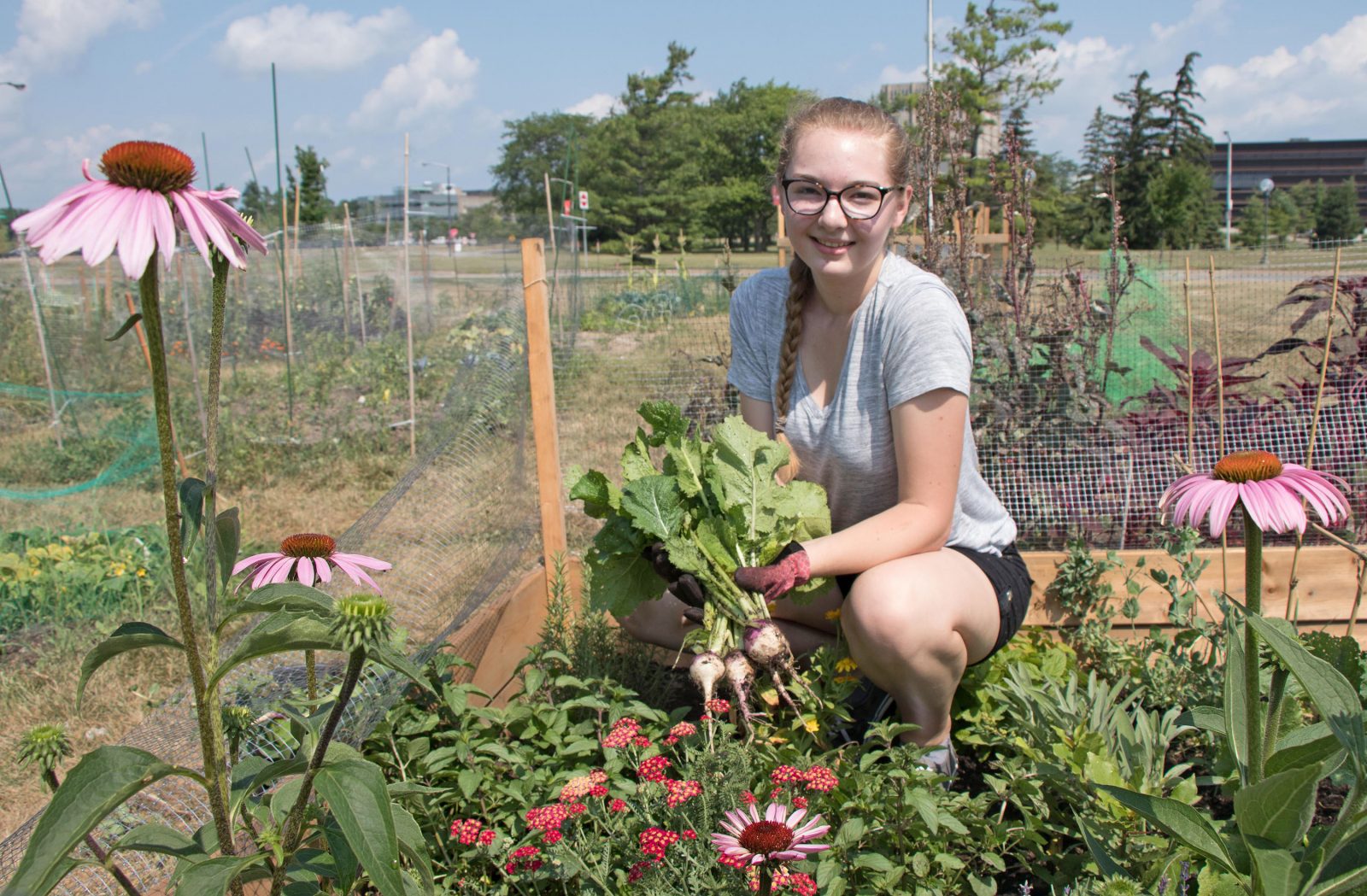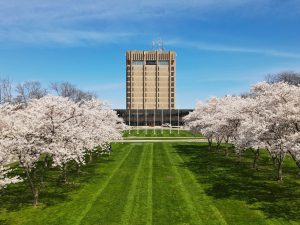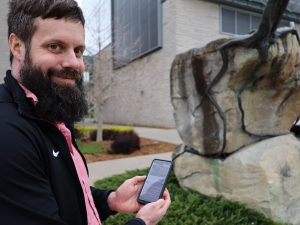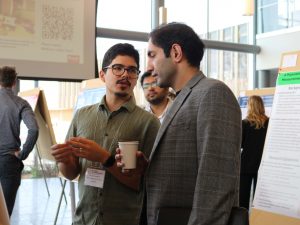 Fourth-year History student Kaylin Currie harvests turnips from her medieval monastic garden. Currie has been working on a directed research course with Associate Professor Elizabeth Vlossak, researching food and medicinal plants and gardening techniques used by monks in the medieval period.
Fourth-year History student Kaylin Currie harvests turnips from her medieval monastic garden. Currie has been working on a directed research course with Associate Professor Elizabeth Vlossak, researching food and medicinal plants and gardening techniques used by monks in the medieval period.There is a bit of history growing in Brock’s community garden this summer.
Fourth-year history students Goran Irandost and Kaylin Currie have been working with Associate Professor Elizabeth Vlossak on a directed research course to research and recreate historic gardens.
After meeting with Vlossak in May to discuss which historical periods they were interested in, the students began researching the history of gardening and food culture in their chosen eras. This included examining what plants were grown, how gardens were laid out, and what techniques were used in cultivation.
Not all of the research has been in the library and archives, though. Currie and Irandost have put their knowledge to work in the garden. Each has a plot in Brock’s community garden, where they are attempting to grow period-appropriate plants using historic techniques.

Fourth-year History student Goran Irandost discusses his latest blog post with Associate Professor Elizabeth Vlossak.
“I focused on Victory Gardens during the Second World War,” says Irandost. “I wanted to understand what these gardens were and whether or not they were important to domestic life.”
His garden features tomatoes, potatoes, radishes and beans, which he tasted for the first time last week.
“It’s been interesting,” he says. “I haven’t grown a garden before this course.”
Irandost has been surprised at the level of interest in his garden from coworkers and family members, who regularly ask for updates and have offered suggestions on caring for his plants.
Protecting his vegetables from the deer has been one challenge Irandost didn’t anticipate, but in the spirit of the Second World Word, he created a fence from reclaimed materials.
Currie has gone farther back in time with her garden, recreating a medieval monastic garden. Her geometrically laid out garden features herbs, vegetables and flowers in the aesthetic of a medieval garden.
“I wanted to include a lot of colour,” she says. “I think the colours I’ve been able to find in my plants is something that makes my garden stand out a little bit more and it was also something medieval monks would have sought after. They wanted gardens that were useful and practical, but also aesthetic.”
Her plants include mints, bay laurel, yarrow and others with medicinal or food uses.
“One of the flowers I’m really excited about is foxglove,” she says. “It was used and is still used to this day as a heart medication.”

A fourth-year History directed research course on historic gardening has allowed students to put into practice the knowledge they learn through archival research. Goran Irandost, who is growing a vegetable garden for the first time, shows off the radishes he harvested from his Second World War Victory Garden.
Vlossak was inspired to offer the course by her own experience growing historic plants in Brock’s community garden last summer.
“One of the things I really love about this course is the way it not only allows students to engage in serious academic research, but also to learn about gardening and actually be outdoors,” says Vlossak, who describes the garden experience as a “living lab for history.”
As part of their academic work, the students have been sharing their research and gardening experience through the Faculty of Humanities social media accounts. Updates are posted to Instagram regularly and the students have been writing a series of blog posts that give a more in-depth look at their research and experience.
“It has been a wonderful experience, both for myself and for the students,” says Vlossak.
The students will be hosting tours of their gardens later this month. Members of the Brock community will be invited to stop by the community garden to learn more about the students’ experiences and get a taste from their historic gardens.








